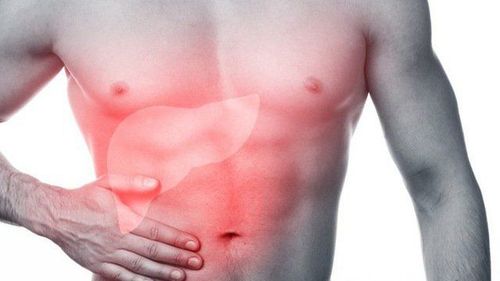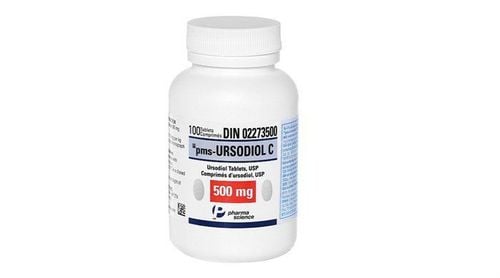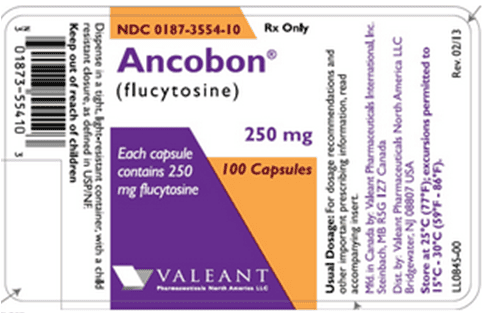This is an automatically translated article.
Cystic fibrosis (CF) is one of the most common, life-limiting conditions affecting Caucasians. Defects result in cystic fibrosis transmembrane conductance regulatory proteins that affect chloride and bicarbonate secretion, as well as epithelial sodium channel (ENaC) dysregulation. These changes lead to defective mucosal clearance, reduced airway surface mucus, and an excessive proinflammatory response to infection.In this article, we explore the overlap in the pathophysiology of cystic fibrosis infection and COVID-19 and discuss how understanding the interaction between both diseases can shed light on treatments in future.
1. Cystic Fibrosis
1.1. What is cystic fibrosis? Cystic fibrosis is a serious genetic condition that damages a person's respiratory and digestive systems. These lesions are often the result of a buildup of mucus in the organs. Some of the organs most susceptible to cystic fibrosis include:Lungs Pancreas Liver Intestines Cystic fibrosis affects the cells that produce sweat, mucus, and digestive enzymes. Normally, these secretions are thin and smooth like olive oil. They are responsible for lubricating various organs and tissues to prevent dryness and reduce the risk of infection. However, in people with cystic fibrosis, a faulty gene causes these fluids to become thick and sticky. Instead of acting as a lubricant, they clog the ducts in the body. This brings with it life-threatening problems, including infections, respiratory failure, and malnutrition. It is important for early detection and prompt treatment of cystic fibrosis to improve quality of life and prolong life expectancy. Although people with cystic fibrosis need daily treatment, they can continue with their normal lives, going to work or school. Screening methods or treatment for cystic fibrosis have improved a lot in recent times, so many people can still live to be 40 or 50 years old.

Nên thăm khám sức khỏe tổng quát thường xuyên để phát hiện sớm và điều trị kịp thời bệnh xơ nang
One of the first signs of cystic fibrosis is a salty taste on the skin. Parents of children with cystic fibrosis can feel this very well when they kiss their children. Other symptoms of cystic fibrosis result from complications that can affect the lungs, pancreas, liver, and other organs.
Respiratory problems The thick and sticky mucus in cystic fibrosis often blocks the passages of air in and out of the lungs. This can cause a number of symptoms such as:
Wheezing Persistent cough Difficulty breathing, especially during heavy work or sports Recurrent lung infections Nasal congestion Digestive problems Mucus can also be present. can block the channels that carry enzymes produced by the pancreas to the small intestine. Without these digestive enzymes, the intestines cannot absorb the necessary nutrients from food, which can lead to:
Mucous, foul-smelling stools Constipation Nausea Nausea Stomach bloating Loss of appetite Slow weight gain and developmental delay in children 1.3. Causes of Cystic Fibrosis Cystic fibrosis occurs due to abnormalities in a gene called the “membrane conductance regulator (CFTR) gene”. This gene controls the movement of water and salt into or out of cells in the body. A mutation in the CFTR gene can cause mucus in the body to become sticky. This mucus normally accumulates in various organs of the body such as the intestines, pancreas, liver, and lungs, and they can also increase the amount of salt released in sweat, which is also the reason why sweat has a salty taste. than usual.

Bệnh xơ gan do đâu?
Many different abnormalities can affect the CFTR gene. The type of defect also affects the severity of cystic fibrosis. The mutant gene will be passed on to the next generation. To express the cystic fibrosis phenotype, children must have received both disease genes from their parents. If they receive only one mutated gene, the child will not develop cystic fibrosis, but they will carry the mutated gene and can pass it on to their children.
2. Impact of COVID-19 on people with cystic fibrosis
COVID-19 activates cytokine receptors leading to sepsis, life-threatening acute respiratory failure of the patient. Coincidentally, patients with cystic fibrosis also have symptoms of cytokine dysregulation and an increased susceptibility to infection that overlaps with the pathophysiology of COVID-19. Through recent scientific evidence, it can be concluded that patients with cystic fibrosis combined with COVID-19 infection are at risk of severe symptoms.
Mutations in the CFTR gene in cystic fibrosis patients disrupt cellular metabolism and trigger inflammatory responses at the same time leading to dysregulation in the assembly of the NLRP3 multifactorial complex for cytokine processing. Meanwhile, the SARS-CoV-2 virus enters and host cells using a mutated protein to bind to cell membrane proteins and angiotensin-converting enzyme 2 for mobility purposes. . Angiotensin 2 has the ability to stimulate cells to produce furin, a substance found in many people with cystic fibrosis. Here are the effects of the SARS-CoV-2 virus in people with cystic fibrosis: The mutant protein of the virus binds to a cell membrane protein. This association is facilitated by the enzymes TMPRSS2 and furin. Upon entry into the cell, inflammatory responses, or cell cycles affected by cystic fibrosis including dysfunction of autophagy, mitophagy, endomal, and cellular metabolism can all aid in replication. of the SARS-CoV-2 virus in patients with COVID-19.

COVID-19 có thể dẫn đến suy hô hấp
The role of purines in viral pathogenesis has recently been reviewed, and scientists state that “the pathogenesis of some CoVs has previously been related to the occurrence of cleavage sites in the immune system. protein self". For example, cleavage of a site in the S protein sequence in viral bronchitis (IBV) results in a more aggressive viral replication, and neurological symptoms are also more apparent. It is therefore entirely correct to conclude that furin activity may be a key factor in COVID-19 infection and that furin inhibitor treatments will play an important role in the future.
Globally, for every 100,000 patients with COVID-19 there are 100 comorbidities of cystic fibrosis with approximately 90% presenting relatively few symptoms and complications. COVID-19 infection in patients with cystic fibrosis was milder than expected, thus suggesting relative protective measures for cystic fibrosis patients in relation to viral processing, including autophagy, mitophagy , intracellular function.
Characterizing the effects of the SARS-CoV-2 virus in patients with cystic fibrosis can help scientists understand the underlying protective effects it may provide, elucidate ways to approach new to antiviral therapy. Clinical trials of drugs for cystic fibrosis should be initiated and evaluated for efficacy in people infected with this new virus. In fact, an experimental study is underway, the outcome of which will depend on the response to COVID-19 in patients with or without combination therapy with cystic fibrosis drugs.
Periodic health check-ups help to detect diseases early, so that there are treatment plans for optimal results. Currently, Vinmec International General Hospital has general health checkup packages suitable for each age, gender and individual needs of customers with a reasonable price policy.
Results of the patient's examination will be returned to the home. After receiving the results of the general health examination, if you detect diseases that require intensive examination and treatment, you can use services from other specialties at the Hospital with quality treatment and services. outstanding customer service.
Please dial HOTLINE for more information or register for an appointment HERE. Download MyVinmec app to make appointments faster and to manage your bookings easily.
Reference source: thelancet.com; nature.com; cdc.gov













